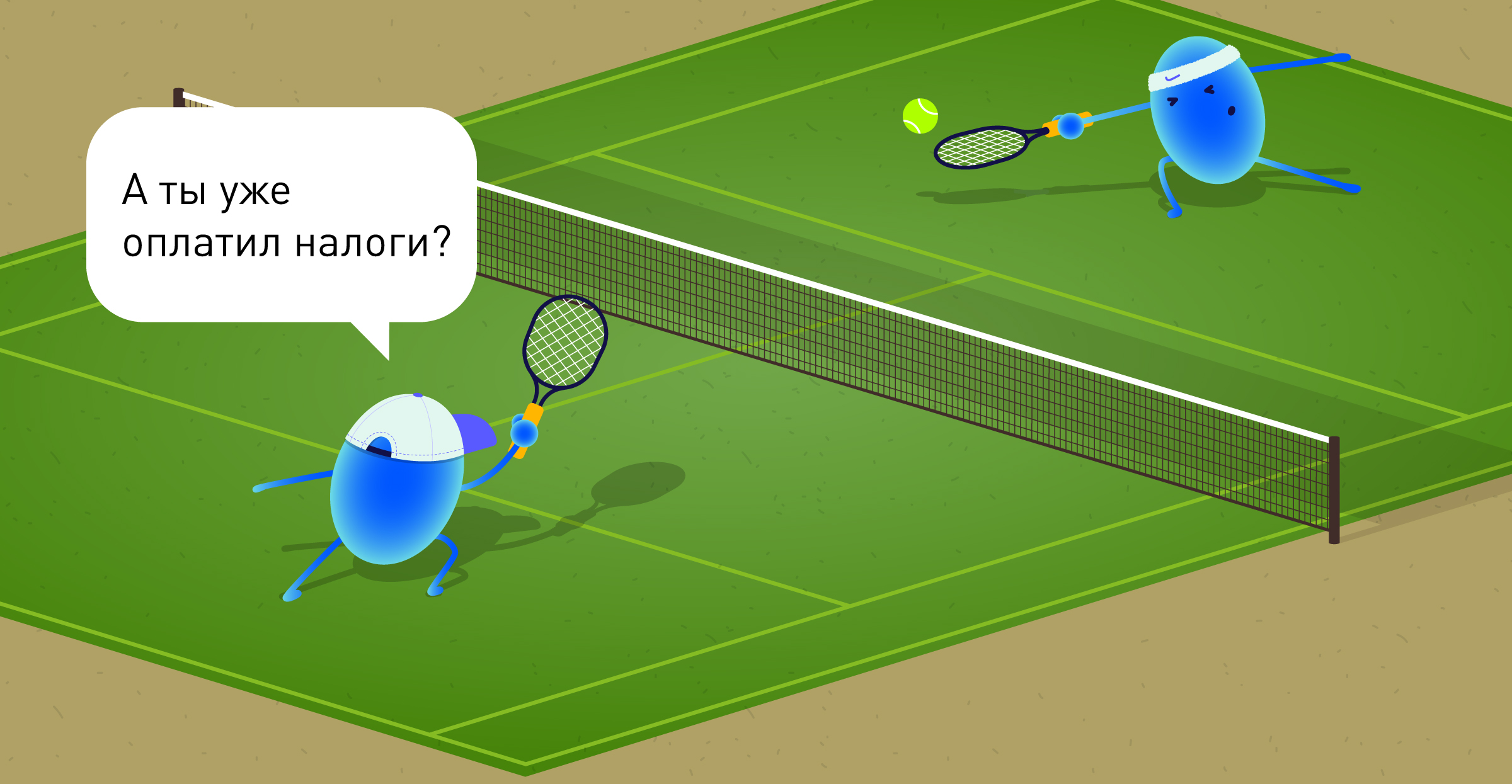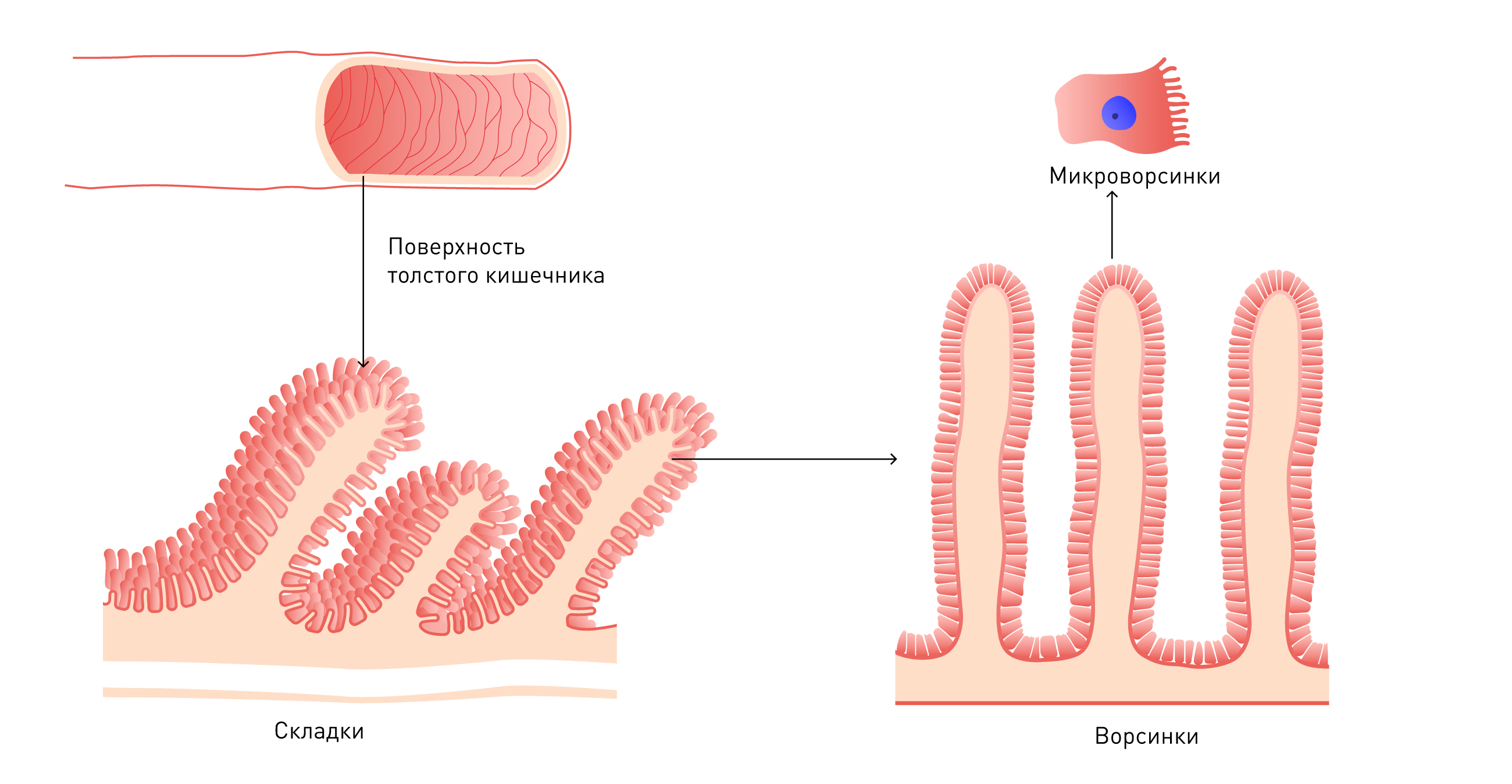Microbiota What is this body and why is it to us
Intestinal microbiota - called the composition of bacteria that live in the human large intestine. Not so long ago, it turned out that these bacteria perform a number of important functions for the human body. Today, scientists call the microbiota a new body worthy of separate study.
Last time, Atlas and I wrote about oncology , and today we are launching a series of articles in order to better know what these bacteria are, how they colonize our intestines and whether they can be controlled.

Illustration by Rentonorama
Bacteria colonize everything around and inside us. They love the warm and humid environment. In the human body, most microorganisms are found in the mouth and intestines.
')
Bacteria begin to colonize our body when we are still in the womb. Previously it was thought that the placenta and the amniotic fluid are sterile, but recent studies show that this is not the case. It is unclear how the bacteria enter the placenta, but there are suggestions that this is influenced by the microflora of the vagina, bacteria of the oral cavity, which in small quantities can enter the bloodstream, and the intestinal microbiota, where immune cells (dendritic) take away certain bacteria that penetrate placenta.

However, large-scale colonization of the intestines by bacteria occurs during childbirth, breastfeeding and when the baby begins to eat solid food. By 1.5–3 years, a human microbiota profile is formed, which contains more than 1000 species of bacteria. Cesarean section, use of antibiotics, an imbalance of bacteria in the mother’s intestine, premature birth, failure to breastfeed are factors that adversely affect the formation of microbiota.
The intestinal task is to absorb the maximum amount of useful substances, and this requires a large surface area. To accommodate it, the structure of the intestine is a tight-fitting folds with villi and microvilli. Because of this, the intestines are often compared to velvet fabric.

Schematic structure of the large intestine
The surface of the intestine is covered with a mucous layer - mucin. It protects intestinal cells from aggressive microbiota. Mucin is updated every hour, as part of this layer is carried away by fecal masses as it moves through the intestines.

A moist, warm environment with lots of folds and processes is an ideal medium for the growth of bacteria. You may have heard the myth that the number of bacteria is 10 times the number of cells in the human body. A human body weighing 70 kilograms and 170 centimeters tall contains about 30 trillion cells and 39 trillion intestinal bacteria. Although the ratio is not 1:10, the number is still impressive.
The human digestive system is designed to break down all incoming food into simple molecules: to make them available for absorption by cells and penetration into the bloodstream. At the same time there are substances that our body can not digest - complex carbohydrates.
Complex carbohydrates are made up of long chains of sugar molecules, which break down enzymes in the gastrointestinal tract. In the human genome, there is simply no information about splitting complex carbohydrate compounds, but the genes of intestinal bacteria encode tens of thousands of such enzymes (polysaccharide lyases).
And, it would seem, why do we need complex carbohydrates, even if our DNA does not say what to do with them? In the process of splitting complex carbohydrates, bacteria synthesize vitamins and short-chain fatty acids - the main source of energy for intestinal cells. A person with bacteria has beneficial cooperation: we feed them, and they feed us.

Another plus of such cohabitation - the genetic material of bacteria is more flexible. These microorganisms are much faster adapt to environmental changes in contrast to humans. A vivid example of this, though negative for us, is the resistance of bacteria to antibiotics, which is being observed now more and more often.
We have already mentioned that intestinal bacteria help to absorb fiber, produce short-chain fatty acids and vitamins. It may feel that every bacterium does all this, but it is not.
A microbiota is a whole ecosystem with its own rules and laws. It can be compared with the metropolis, whose residents have a variety of professions. Part of the bacteria works for the benefit of the whole city and monitors pathogenic microorganisms so that they do not disrupt the order and make a revolution. Some of the bacteria are passive: they do not benefit the city, but they do not create problems. And the third part all the time is plotting a plan how to seize the city and plunder everything acquired. It depends on our diet which of these three representatives will be more.
Complex carbohydrates - food for law-abiding citizens of microbiota who care about their home. True, this is not a ready dish that we bring on a plate. For such tiny creatures, the complex carbohydrate molecule looks more like a felled oak. To remove branches, prepare a log, cut it, make firewood and matches, we need a variety of types of bacteria.

If some type of bacteria is not enough, the process of splitting carbohydrates, the synthesis of short-chain fatty acids and vitamins will be less effective. Therefore, the more variety of foods with fiber we eat, the higher the variety of beneficial bacteria and the more stable the situation in the city, despite the minor hooliganism of pathogenic microorganisms.
Recently, more and more research has appeared on how intestinal bacteria affect our lives. In the next article we will talk about the most common genera of bacteria that live in the intestines of people, and how they work.
Last time, Atlas and I wrote about oncology , and today we are launching a series of articles in order to better know what these bacteria are, how they colonize our intestines and whether they can be controlled.

Illustration by Rentonorama
Where in our intestines are bacteria
Bacteria colonize everything around and inside us. They love the warm and humid environment. In the human body, most microorganisms are found in the mouth and intestines.
')
Bacteria begin to colonize our body when we are still in the womb. Previously it was thought that the placenta and the amniotic fluid are sterile, but recent studies show that this is not the case. It is unclear how the bacteria enter the placenta, but there are suggestions that this is influenced by the microflora of the vagina, bacteria of the oral cavity, which in small quantities can enter the bloodstream, and the intestinal microbiota, where immune cells (dendritic) take away certain bacteria that penetrate placenta.

However, large-scale colonization of the intestines by bacteria occurs during childbirth, breastfeeding and when the baby begins to eat solid food. By 1.5–3 years, a human microbiota profile is formed, which contains more than 1000 species of bacteria. Cesarean section, use of antibiotics, an imbalance of bacteria in the mother’s intestine, premature birth, failure to breastfeed are factors that adversely affect the formation of microbiota.
Why the intestines
The intestinal task is to absorb the maximum amount of useful substances, and this requires a large surface area. To accommodate it, the structure of the intestine is a tight-fitting folds with villi and microvilli. Because of this, the intestines are often compared to velvet fabric.

Schematic structure of the large intestine
The surface of the intestine is covered with a mucous layer - mucin. It protects intestinal cells from aggressive microbiota. Mucin is updated every hour, as part of this layer is carried away by fecal masses as it moves through the intestines.

A moist, warm environment with lots of folds and processes is an ideal medium for the growth of bacteria. You may have heard the myth that the number of bacteria is 10 times the number of cells in the human body. A human body weighing 70 kilograms and 170 centimeters tall contains about 30 trillion cells and 39 trillion intestinal bacteria. Although the ratio is not 1:10, the number is still impressive.
Why do we need bacteria
The human digestive system is designed to break down all incoming food into simple molecules: to make them available for absorption by cells and penetration into the bloodstream. At the same time there are substances that our body can not digest - complex carbohydrates.
Complex carbohydrates are made up of long chains of sugar molecules, which break down enzymes in the gastrointestinal tract. In the human genome, there is simply no information about splitting complex carbohydrate compounds, but the genes of intestinal bacteria encode tens of thousands of such enzymes (polysaccharide lyases).
And, it would seem, why do we need complex carbohydrates, even if our DNA does not say what to do with them? In the process of splitting complex carbohydrates, bacteria synthesize vitamins and short-chain fatty acids - the main source of energy for intestinal cells. A person with bacteria has beneficial cooperation: we feed them, and they feed us.

Another plus of such cohabitation - the genetic material of bacteria is more flexible. These microorganisms are much faster adapt to environmental changes in contrast to humans. A vivid example of this, though negative for us, is the resistance of bacteria to antibiotics, which is being observed now more and more often.
How does the microbiota
We have already mentioned that intestinal bacteria help to absorb fiber, produce short-chain fatty acids and vitamins. It may feel that every bacterium does all this, but it is not.
A microbiota is a whole ecosystem with its own rules and laws. It can be compared with the metropolis, whose residents have a variety of professions. Part of the bacteria works for the benefit of the whole city and monitors pathogenic microorganisms so that they do not disrupt the order and make a revolution. Some of the bacteria are passive: they do not benefit the city, but they do not create problems. And the third part all the time is plotting a plan how to seize the city and plunder everything acquired. It depends on our diet which of these three representatives will be more.
Complex carbohydrates - food for law-abiding citizens of microbiota who care about their home. True, this is not a ready dish that we bring on a plate. For such tiny creatures, the complex carbohydrate molecule looks more like a felled oak. To remove branches, prepare a log, cut it, make firewood and matches, we need a variety of types of bacteria.

If some type of bacteria is not enough, the process of splitting carbohydrates, the synthesis of short-chain fatty acids and vitamins will be less effective. Therefore, the more variety of foods with fiber we eat, the higher the variety of beneficial bacteria and the more stable the situation in the city, despite the minor hooliganism of pathogenic microorganisms.
Recently, more and more research has appeared on how intestinal bacteria affect our lives. In the next article we will talk about the most common genera of bacteria that live in the intestines of people, and how they work.
Source: https://habr.com/ru/post/447842/
All Articles